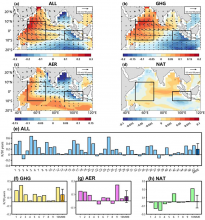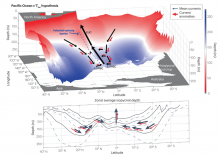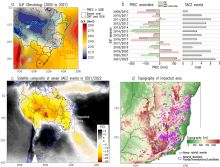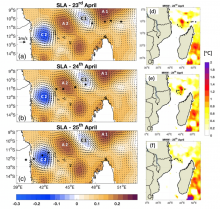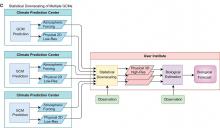Multiyear La Niña does not increase the likelihood of transitioning to a strong El Niño
Submitted by Joana on Tue, 2025-03-11 08:40Figure 1. More persistent cold conditions in boreal spring and early summer after a multiyear La Niña, compared to those before a strong El Niño (left, a, c), inhibit an eastward movement and enhancement of atmosphere deep convection (right, b, d), leading to a decoupled ocean and atmosphere that delay the growth of a subsequent El Niño.









